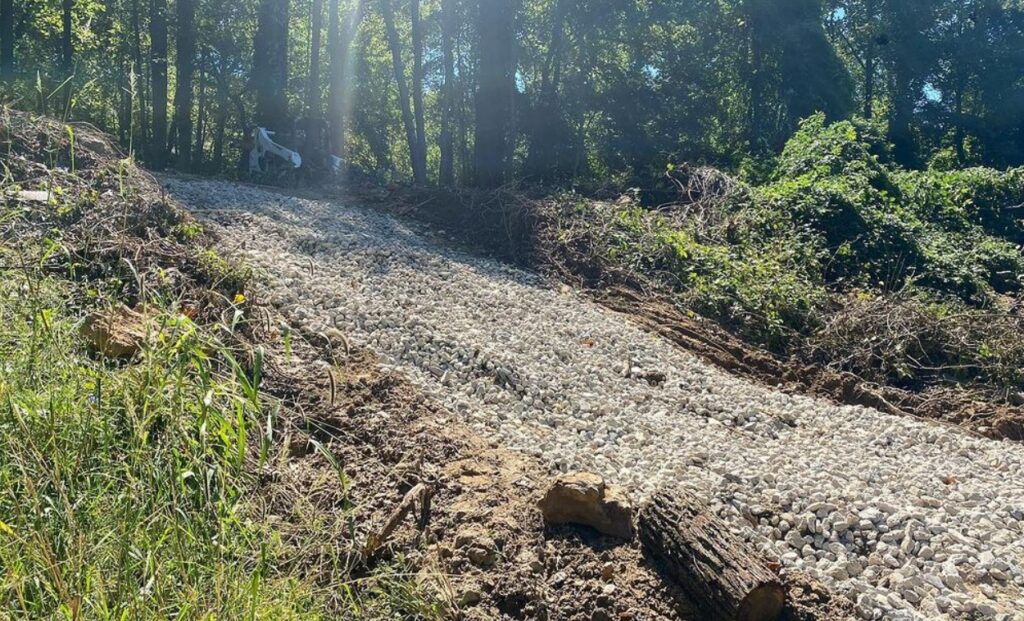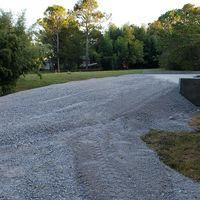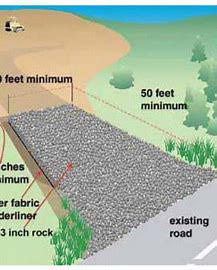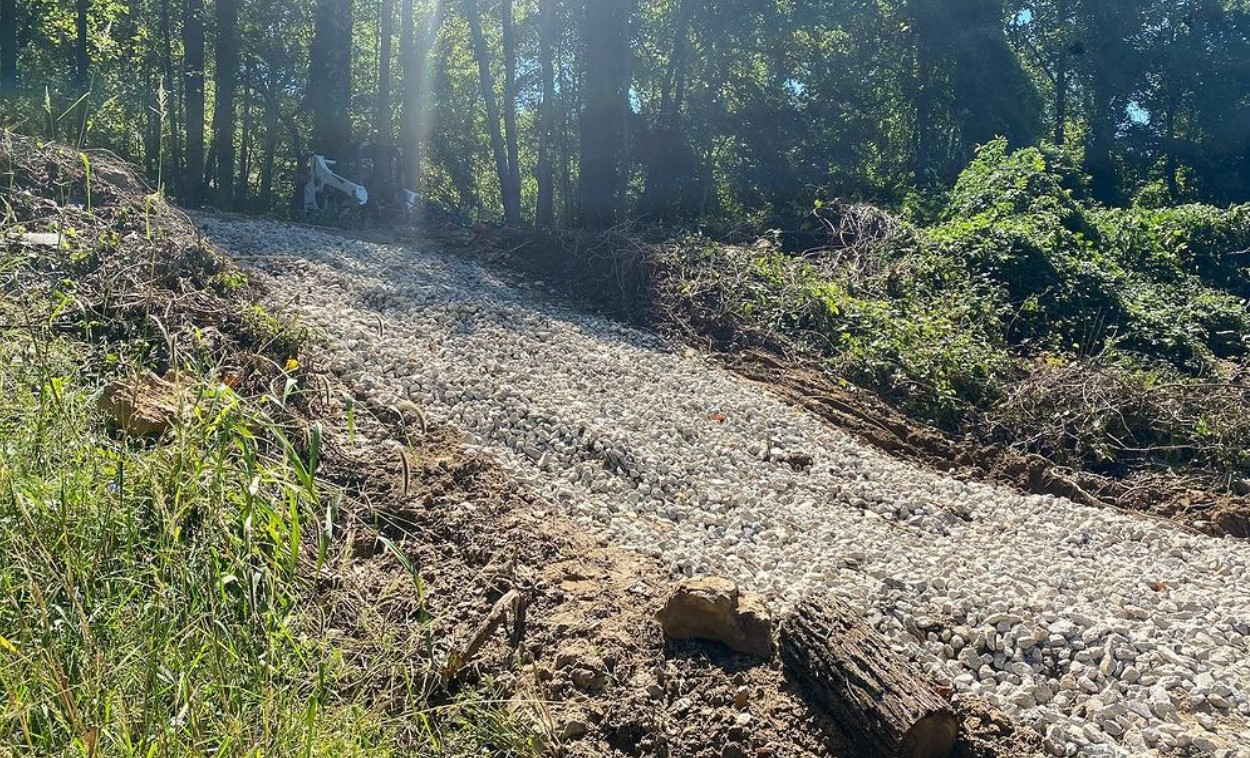
Construction sites are dynamic environments where heavy machinery, excavation, and movement of materials are part of the daily routine. Erosion control stands as a crucial aspect to mitigate the adverse environmental impact. Vehicle tracking pads are a fundamental tool, serving to minimize soil displacement and control sediment runoff.
What is the significance of Stabilized Construction Access in erosion control? Stabilized Construction Access, commonly known as Vehicle Tracking Pads, effectively curbs sediment runoff on construction sites. These pads, as installed by Eastcoast Site Work in New Jersey, reduce environmental impact and align with regulatory standards, ensuring efficient erosion control.
Definition and Purpose of Stabilized Construction Access
Vehicle tracking pads, also known as Stabilized Construction Access, are designated areas or surfaces strategically designed to regulate the movement of construction vehicles in a controlled manner. These pads, often composed of materials like geotextiles, gravel, or stabilized surfaces, serve as temporary pathways. Their primary function is to prevent or minimize soil erosion resulting from the movement of construction vehicles and equipment on-site.
Importance of Erosion Control in Construction Sites
Environmental Significance
Erosion at construction sites poses significant environmental challenges, particularly in terms of sediment pollution. According to the Environmental Protection Agency (EPA), sediment ranks as one of the most prevalent pollutants in rivers and streams across the United States. Each year, runoff from construction sites contributes substantial sediment loads, impacting water quality and aquatic habitats.
Sediment-laden runoff poses several risks, including increased turbidity in water, reduced oxygen levels, and potential harm to aquatic flora and fauna. These consequences highlight the necessity of effective erosion control measures to mitigate these adverse effects and protect water resources.
Regulatory Compliance
Stringent environmental regulations mandate erosion control measures at construction sites to prevent soil erosion and sediment runoff. Compliance with these regulations is critical for construction firms, ensuring adherence to guidelines set forth by entities like the Clean Water Act and local environmental agencies. Failure to comply can result in significant fines and penalties.
Understanding Erosion in Construction Sites
Causes and Effects of Erosion
Erosion in construction sites is primarily caused by the disturbance of soil and land surfaces due to activities such as excavation, grading, and movement of heavy machinery. Rain, wind, and even vehicle traffic can displace soil particles, leading to sediment runoff.
The effects of erosion extend beyond the construction site boundaries. Sediment-laden runoff can reach nearby water bodies, causing siltation, increased turbidity, and alteration of aquatic ecosystems. Statistics from the U.S. Geological Survey indicate that sedimentation remains a top threat to water quality, affecting aquatic habitats and impairing water supply systems.
Impact of Erosion on Construction Projects
Apart from the environmental repercussions, erosion can significantly impact construction projects. Soil erosion can undermine the stability of slopes, embankments, and other earthworks, jeopardizing the safety and integrity of structures. Additionally, erosion can hinder progress by necessitating corrective measures, leading to project delays and increased costs.
Addressing erosion effectively involves implementing preventative measures like vehicle tracking pads to minimize sediment runoff and maintain a controlled construction environment.

Benefits of Stabilized Construction Access in Erosion Control
Erosion Prevention and Sediment Control
Stabilized construction access serves as a vital tool in preventing erosion and controlling sediment runoff within construction sites. These access pathways effectively confine the movement of construction vehicles, mitigating the displacement of soil particles and reducing the risk of sediment transport. Research by the Construction Industry Research and Information Association (CIRIA) indicates that employing such measures significantly reduces erosion potential by limiting the disturbed area and controlling soil compaction.
Minimization of Soil Disturbance and Sediment Runoff
By providing designated paths for construction vehicles and equipment, stabilized construction access helps minimize soil disturbance. This confined movement restricts the impact of construction traffic to specific areas, preserving the integrity of surrounding soil. The decreased disturbance directly correlates with reduced sediment runoff. According to the U.S. Environmental Protection Agency (EPA), the use of stabilized construction access can reduce sediment runoff by up to 80%, significantly contributing to erosion control efforts on construction sites.
Implementing Stabilized Construction Access
Proper Placement and Installation Techniques
The effectiveness of stabilized construction access depends on its correct placement and installation. These pathways should be strategically located at entry and exit points, allowing for easy access while ensuring vehicles track off the construction site with minimized soil dispersion. Proper installation involves choosing suitable materials, such as geotextiles or stabilized aggregate, to provide a stable surface capable of withstanding heavy traffic. The American Society for Testing and Materials (ASTM) specifies guidelines for selecting and installing materials to achieve optimal results.

Strategic Placement: Stabilized Construction Access (Vehicle Tracking Pads) should be strategically located at points of construction ingress and egress where sediment tracking or flow from the construction site onto roads is anticipated. According to the New Jersey standards, these pads are typically placed at the entrance and exit points to construction sites, acting as temporary surfaces to reduce sediment tracking onto paved roadways or other impervious surfaces.
Design Considerations: The standards provide specific design criteria for these pads. The thickness of the crushed stone layer should not be less than six (6) inches. It’s recommended to use clean crushed angular stones with sizes complying with ASTM C-33, size No. 2 (2 ½ to 1 ½ inches) or No. 3 (2 to 1 inch). The length and width of the pads vary based on the type of soil and slope of the access road. For instance, the length varies from 50 feet for coarse-grained soils to 100 feet for fine-grained soils on slopes between 0 to 2%. For slopes exceeding 5%, Hot Mix Asphalt Base Course, Mix I-2 is recommended.
Best Practices for Using Stabilized Construction Access
To maximize the benefits of stabilized construction access, adhering to best practices is essential. Regular inspection and maintenance are critical to ensuring these pathways remain functional. Cleaning and repairing damaged areas promptly help sustain their effectiveness in controlling erosion and sedimentation. Moreover, implementing clear and consistent traffic control measures, such as signage and instructions, ensures construction vehicles adhere to designated paths, further minimizing soil disturbance and erosion risks.
By incorporating these best practices into construction site protocols, companies can harness the full potential of stabilized construction access, effectively reducing erosion and sediment runoff while maintaining environmental compliance.
Regular Maintenance: Adherence to regular maintenance is crucial for the effectiveness of Vehicle Tracking Pads. The pads must be maintained in a condition that prevents sediment from tracking or flowing onto roadways. This includes periodic top dressing with additional stone or repair and cleanout of any sediment-trapping measures. Immediate removal of any spilled or tracked sediment onto roadways or impervious surfaces is mandatory.
Compliance with Standards: Compliance with the guidelines provided by local ordinances and governing authorities is essential for effective use. The document emphasizes that any accumulation of dust or sediment inadequately cleaned by conventional methods should be addressed with more extensive cleaning techniques such as using power brooms or street sweepers to ensure paved or impervious surfaces remain free from sediments.
Regulations and Compliance
Compliance with Environmental Standards
The standards set by New Jersey’s guidelines are designed to align with environmental standards and regulations, aiming to minimize the environmental impact of construction activities. Compliance with these standards ensures that erosion control measures, including Stabilized Construction Access, are properly implemented to prevent soil erosion and sediment runoff.
Regulatory Requirements for Erosion Control Measures
The regulations outlined in the document aim to enforce the proper application of erosion control practices in construction. They stipulate the use of Stabilized Construction Access as one of the necessary measures to mitigate sediment tracking onto paved roadways or impervious surfaces. Compliance with these requirements is crucial to avoid environmental violations and ensure responsible construction practices.
Maximizing Erosion Control with Stabilized Construction Access
Maximizing erosion control through measures like Stabilized Construction Access, also known as Vehicle Tracking Pads, is crucial for construction sites. These initiatives prevent environmental degradation and align with regulatory standards, making them indispensable in mitigating sediment tracking onto paved surfaces and impervious areas.
For construction projects in New Jersey, Eastcoast Site Work stands out as a premier choice for the installation of erosion control solutions. With our extensive experience and expertise in providing top-notch erosion control services, we offer practical and effective strategies. Our proficiency ensures that construction sites effectively manage sediment tracking and runoff, preserving local ecosystems and water resources while adhering to stringent environmental regulations. Choosing Eastcoast Site Work guarantees reliable solutions that contribute to a sustainable and environmentally conscious construction process.


